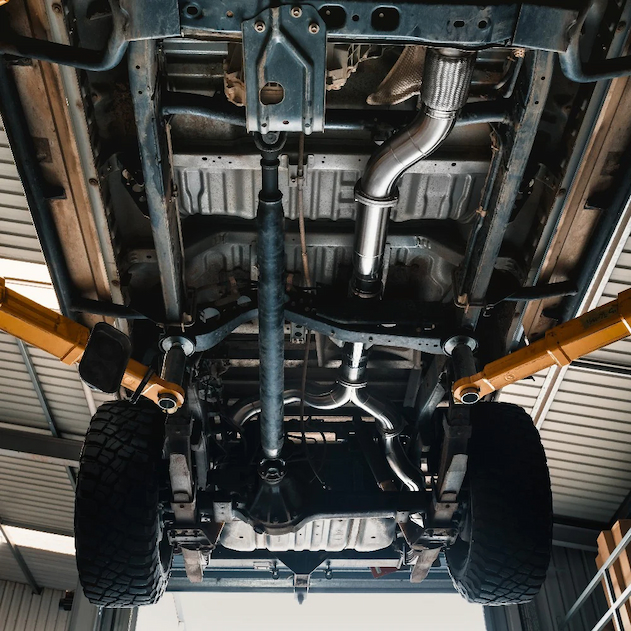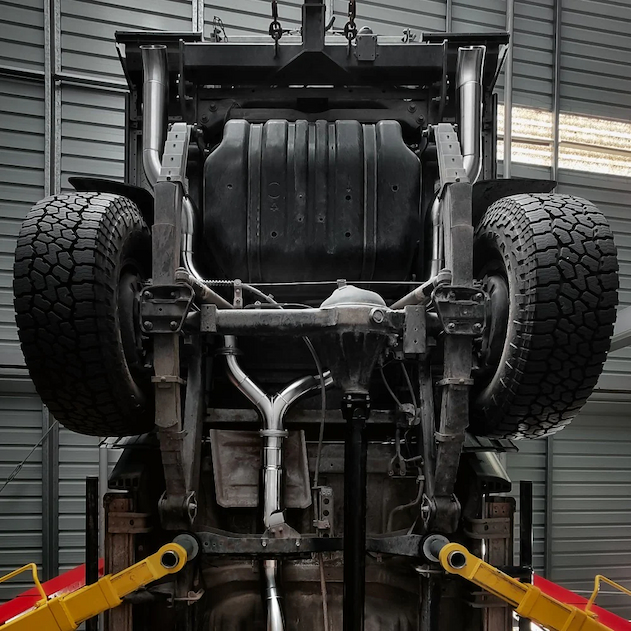Boosting Performance Down Under: Upgrading Your Toyota Land Cruiser’s Exhaust System
It’s not hard to understand why Toyota’s all-conquering Land Cruiser continues to be such a dominant feature on Australia’s automotive landscape. These 4WD flagships combine the Hilux’s rock-crawling tenacity with the Lexus’s inescapable luxury, making them the perfect vehicle to comfortably tackle the outback today, and to attack the big lap tomorrow.
The Land Cruiser’s popularity also makes it a prime platform for Australia’s performance-minded aftermarket. Even a vehicle with the Land Cruiser’s credentials stands to benefit from a range of ADR-approved, Aussie-specific improvements; and ideally, a low-restriction, ceramic-coated exhaust system is the best place to start.
Land Cruiser Exhaust Upgrades that Help Keep Your Toyota Running Cooler

Let’s be honest: while there aren’t too many upgrades that can be made to a Land Cruiser, the exhaust system is certainly one of them. The big Toyota’s heavy steel headers and tubing may be fine for gentler climes, but their heat retention can spell problems in Oz. Invariably, that’s precisely what high-performance Toyota Land Cruiser exhaust systems are designed and engineered to prevent: destructive heat build-up that can result in power-robbing performance pitfalls and heat-related fatigue.
Make no mistake: in a country where long drives in blistering temperatures are the norm, even the mighty Land Cruiser can struggle to rid itself of unwanted heat. This is especially true for V8-powered turbos like the URJs and VDJs, where an upgraded Land Cruiser exhaust system is precisely what these 4WDs need:
- Improve the scavenging of spent exhaust gases away from the engine;
- Increase the velocity of heated exhaust gases being drawn throughout the entire exhaust system; and,
- Eliminate as much turbulence, and power-robbing backpressure from the system as possible.
While a richer tailpipe note may be the most noticeable advantage that aftermarket Land Cruiser exhausts have to offer, it’s their evacuation and heat transfer properties that are the most beneficial, especially if equipped with a diesel. Unwanted heat build-up and excessive exhaust backpressure can be detrimental to Toyota’s diesel particulate filter (DPF), opening the door for potential wastegate failure, and ultimately, costly turbine seizure. Upgrading to a Land Cruiser performance exhaust system decisively eliminates that problem, while still upholding all the other advantages that aftermarket exhausts are known for.
Land Cruiser Performance Advantages That You Can Feel
Although your first instinct when looking at aftermarket Toyota Land Cruiser exhausts might be to invest in the largest diameter pipes possible, nothing could be more unsuitable for your engine’s performance. That’s because instead of quickly evacuating exhaust gases, bigger pipes have the tendency to allow spent gases to linger in the system, effectively dragging your performance down.
The fact is, every exhaust system has an optimal tube diameter for the best performance and exhaust flow. And as with the system on any vehicle, a high-performance Toyota Land Cruiser exhaust system is guaranteed to produce the results that owners expect from an aftermarket enhancement, including:
- A noticeable improvement in acceleration when it’s time to get the big Toyota rolling;
- A positive increase in throttle response for passing, merging, or trailer towing; and,
- A significant jump in bottom end torque for climbing hills, or getting off the pavement.
Given the Land Cruiser’s extensive history in Australia, it’s no coincidence that these big 4WDs also have one of the most extensive engine and powertrain rosters ever assembled in the country. Aftermarket exhaust manufacturers are aware of this too, which means their upgraded stainless steel and aluminised exhaust lineups for the Land Cruiser also has to be one of the most extensive in production anywhere.
Aftermarket Configurations for a Full Range of Land Cruiser Engine Options

From the petrol-powered, 4-cylinder 22R used in the early 80s J70s, to the twin-turbo, diesel-powered V6 F33s used in late model J300s, the sheer range of factory turbo / non-turbo exhaust combinations used with 4-, 6-, and 8-cylinder Land Cruisers is enough to boggle the mind. Understandably, the mandrel bent and TIG-welded aftermarket replacements have to be just as versatile as their OE counterparts, which is why they’re manufactured in 3“, 3½“, and 4“ tube arrangements for an array of configurations that include:
- Turbo-back setups, either with or without cats or mufflers;
- Cat-back setups, with or without center mufflers and tips;
- Single or dual cab DPF back, coil conversion utes, with or without mufflers;
- Single or dual cab turbo back, coil conversion utes, with or without mufflers; and,
- Wagons, with DPF, with or without muffler.
Individual aftermarket components are also available for Land Cruiser exhausts, such as:
- 4-, 6-, and 8-cylinder headers and extractors;
- Turbo and dump pipes, and catalytic converters; and,
- Y-pipes and connector pipes.
The fact is, premium aftermarket manufacturers are going to have everything you need to assemble an ADR-compliant exhaust for Toyota Land Cruiser and Prado models. With an eye continuously focused on combating head-related parts and performance problems, some key exhaust components even utilize ceramic coatings to ensure that they’re doing the best job possible.
Ceramic Coatings Offer the Ultimate in Thermal Retention Protection
If you’re fully committed to upgrading your Land Cruiser’s exhaust to beat the heat, ceramic-coated headers/extractors and cats are mandatory accessories. Their superior heat transfer properties are the last word when it comes to reducing your exhaust’s thermal retention, and the benefits these coatings offer include:
- Greater resistance to fatigue or failure as a result of vibration or heat cycling;
- Increased corrosion resistance to caustic exhaust gases and on-road exposure; and,
- A significant reduction of heat radiating through your floors and into your cabin.
Heat-resistant ceramic coatings are especially valuable due to their ability to lock in heat: a process that equates to forced scavenging and gas evacuation. It’s the ideal way to transform an upgraded Land Cruiser’s exhaust system into a cooling heat sink for the engine.
The Final Word
At the end of the day, it’s no wonder why Australia imports more Land Cruisers than any other country on the planet. No other 4WD on the market does a better job of taming the long, hard kilometers that Oz has to offer, which is why they need as much help beating the heat as they can get.
Aftermarket Toyota Land Cruiser exhaust systems have everything you need to give these 4WDs the advantage when it comes to maximizing performance. They’re the ideal upgrade that soundly puts your Land Cruiser at the top of the pile.



